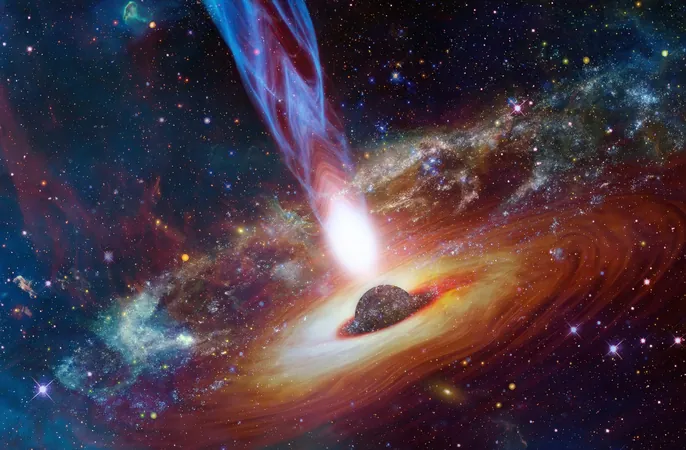
Early Quasars Defy Physics: Unraveling the Mystery of Rapid Supermassive Black Hole Growth
2024-11-21
Author: Sarah
A groundbreaking study has uncovered astonishing insights into the formation of supermassive black holes—each possessing a mass billions of times that of our Sun—within the first billion years following the Big Bang. Spearheaded by researchers from Italy’s National Institute for Astrophysics (INAF), this research scrutinized 21 of the most distant quasars ever identified, utilizing data obtained from the cutting-edge XMM-Newton and Chandra space telescopes.
The analysis highlights a theory that these colossal black holes expanded to their majestic sizes through a hyper-accelerated process of accretion, shedding light on their puzzling existence in the nascent Universe. Quasars, known for their incredible luminosity, represent the energetic beacons produced by active galactic nuclei powered by supermassive black holes. The quasars studied here are some of the earliest celestial objects known, tracing back to a time when the Universe was still in its infancy, less than a billion years old.
Key highlights from the research indicate a surprising relationship between the X-ray emissions from these quasars and the velocity of matter being ejected by their supermassive black holes. The researchers identified that the winds of matter, which can exceed thousands of kilometers per second, correspond to the temperature in the corona—the X-ray-emitting gas surrounding the black hole.
In a challenging twist, the findings revealed that quasars with lower-energy X-ray emissions, indicative of a cooler corona, exhibited faster winds. This phenomenon suggests an unprecedented period of growth surpassing what is termed the Eddington limit—an important threshold that constrains how rapidly a black hole can draw in matter. This accelerated phase has been dubbed “super-Eddington.” Conversely, those quasars with higher-energy emissions displayed slower outflows.
Alessia Tortosa, lead author of the study from INAF in Rome, stated, “Our work indicates that the supermassive black holes at the heart of these early quasars might have gained mass at an extraordinary rate, posing significant questions about the limitations set by current physical laws.”
Caution was taken in the observation processes, with researchers conducting around 700 hours of quasar scrutiny mainly through the European Space Agency's XMM-Newton telescope. This effort was part of the ambitious HYPERION project, helmed by researcher Luca Zappacosta, focusing on hyper-luminous quasars from the cosmic dawn.
The implications of these findings extend far beyond individual quasars, providing a key to understanding the formation and evolution of the Universe’s first massive structures. They also inform the design of upcoming advanced X-ray missions, such as ATHENA (ESA), AXIS, and Lynx (NASA), which are set to launch between 2030 and 2040. The knowledge gained from this study will be invaluable in enhancing future observational capabilities and methodologies, particularly in the quest to study black holes and galactic nuclei at unprecedented distances.
This remarkable research not only addresses one of modern astrophysics' biggest enigmas—the rapid emergence of massive black holes shortly after the Big Bang—but also opens exciting new paths for exploring the complex timeline of our Universe’s early evolution. The findings have been documented in the esteemed journal Astronomy & Astrophysics, marking a significant contribution to our understanding of cosmic phenomena.




 Brasil (PT)
Brasil (PT)
 Canada (EN)
Canada (EN)
 Chile (ES)
Chile (ES)
 España (ES)
España (ES)
 France (FR)
France (FR)
 Hong Kong (EN)
Hong Kong (EN)
 Italia (IT)
Italia (IT)
 日本 (JA)
日本 (JA)
 Magyarország (HU)
Magyarország (HU)
 Norge (NO)
Norge (NO)
 Polska (PL)
Polska (PL)
 Schweiz (DE)
Schweiz (DE)
 Singapore (EN)
Singapore (EN)
 Sverige (SV)
Sverige (SV)
 Suomi (FI)
Suomi (FI)
 Türkiye (TR)
Türkiye (TR)